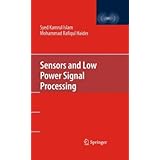
Average Reviews:

(More customer reviews)A 117-page book is necessarily going to be an introduction to a subject and not a detailed treatment. The coverage of wireless technologies in 14 pages (Chapter 4)--from basic RF theory to an explanation of various waveforms--is necessarily superficial, but if you're not up to speed on RF technology it's as good an overview as you could hope for in the space provided. Still, the coverage of low-power circuit design in 10 pages (Chapter 3) is not going to help you design circuits, particularly given the focus on how semiconductor devices work the way they do, which is only of theoretical interest to your average circuit designer, who learned this stuff in school anyway. The authors' coverage of the various types of sensors, however, is particularly good, especially their coverage of emerging biophotonic, electrochemical and electromechanical sensors.
In short this is a quick introduction to low-power sensors and a wide range of applications in which they're found. It's well suited to an undergraduate engineering course, though if you're new to such networks and considering implementing one, this book is a good place to get started.
Click Here to see more reviews about: Sensors and Low Power Signal Processing
Low-power sensors and their applications in various fields ranging from military to civilian lives have made tremendous progress in the recent years. Low-power and extended battery life are the key focuses for long term, reliable and easy operation of these sensors. Sensors and Low Power Signal Processing provides a general overview of a sensor's working principle and a discussion of the emerging sensor technologies including chemical, electro-chemical and MEMS based sensors. Also included is a discussion on design challenges associated with low-power analog circuits and the schemes to overcome them. Finally, a short discussion of some of the simple wireless telemetry schemes best suited for low-power sensor applications and sensor packaging issues is discussed. Applications and sensor prototypes included are environmental monitoring, health care monitoring and issues related to the development of sensor prototypes and associated electronics to achieve high signal-to-noise ratio will also be presented.
Click here for more information about Sensors and Low Power Signal Processing

0 comments:
Post a Comment